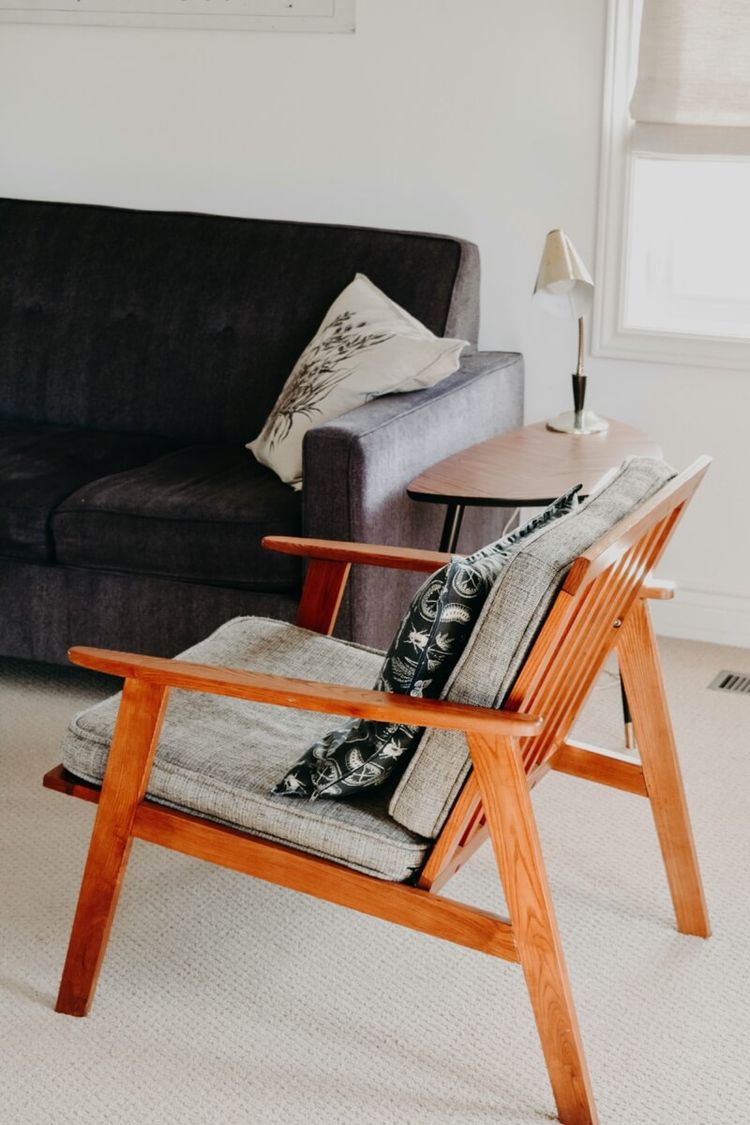Shared Ownership Alternatives

As UK house prices continue to rise, more people are looking for alternate paths to owning their own homes. For many, money is an issue and saving for a deposit is the hardest part of being able to buy a home. The challenges faced mainly by first time buyers appear to have been recognised. As a result, there are now a number of schemes, mainly government supported, available for those struggling to get on the property ladder. The Shared Ownership scheme is one example. It allows those with a smaller deposit to buy a share in a property they wish to live in.
However, Shared Ownership is not the only option if you want to buy your home. There are other schemes out there to help first-time buyers. At Wayhome, we've been looking at the different approaches to Shared Ownership and what they involve.
What is Shared Ownership?
Before we take a look at the various schemes available, it's important to understand what the concept of Shared Ownership itself involves.
How does Shared Ownership work?
Shared Ownership does pretty much what it says on the tin. You'll buy a share (usually between 25% and 75% in the first instance) of your home and pay rent on the remaining amount. As time goes by, there's the option to increase the amount of shares you have in the property. This is known as ‘staircasing’ and in some circumstances, you can staircase your way to 100% ownership.
Who can apply for a Shared Ownership property?
You can apply for a Shared Ownership property if you're over 18 with a household income of less than £80,000 a year (£90,000 in London). You'll be eligible if you're a first-time buyer, or if you've previously owned your own home but no longer do so (unless you live in a council or other Housing Association property).
What type of properties does it apply to?
Generally speaking, Shared Ownership applies to new builds or Housing Association resale properties. So, if you're looking for a grade 2 listed doer-upper, the scheme probably isn't for you. In addition, Shared Ownership properties are always leasehold properties. This means that you're likely to be responsible for any ground rent or service charges associated with the lease, no matter the size of the share you currently own.
The restrictions
It's true that with Shared Ownership, you'll get a route to owning your own home, but it's not without restrictions. The Shared Ownership lease may prevent you from making changes and alterations to the property. So, whilst it might be the case that you can make the property your own internally, you may need to get permission to make any significant or structural alterations to your home. It's not an automatic right. If, for example, you're considering investing in an extension, you should always get help and check with your Housing Association and the full terms of your lease before doing so.
Be aware that each Shared Ownership scheme has its own specific rules so you should check with the Shared Ownership provider. We also suggest getting a second opinion from an independent, regulated, third-party, financial advisor.
Stamp Duty for a Shared Ownership Property
First-time buyers can either pay the Stamp Duty on the full purchase price of the property as if they were buying the property outright and not using Shared Ownership. The downside of this is the cost that you have to lay-out up front, but on the plus side you will never have to pay any more Stamp Duty on that property, even if you go on to buy it outright at a more expensive price. Or, they can choose to just pay the Stamp Duty on the share that you are initially buying (and this may even be less than the allowance for first time buyers). The plus side here is that you don’t need to lay out as much money when you first buy your home, but then the overall cost that you end up paying for Stamp Duty might be higher when you eventually staircase to 80% or more of the property.
Working out Stamp Duty payments on a Shared Ownership property can get complicated so do make sure that you take independent financial advice.
What other schemes are available?
Shared Ownership schemes have proved a popular way for first-time buyers and those with a lower household income to get their feet on the property ladder. However, as you'll see below, they're not the only option.
Help To Buy equity schemes
How does it work?
The Government's Help to Buy Equity Loan helps aspiring homeowners and first-time buyers get onto the property ladder with as little as a 5% deposit. If you're eligible, you'll get a Help to Buy equity loan to support the purchase of your new build home from the Government. Whilst this is not exclusively for first-time buyers, it is restricted to new build properties. You must have at least a 5% deposit, and you'll then get a 20% top up from the Government (40% in London). As a result, you'll technically get a deposit worth 25% of the property purchase price even though you've only contributed a 5% deposit.
You'll then need to get a mortgage to cover the cost of the remainder. With this scheme, when you take out a mortgage, it must be a repayment mortgage, as interest-only mortgages are not permitted. This means that you'll have two loans outstanding on your property: the 20% deposit loan from the Government; and the mortgage. Remember that there's no guarantee that you'll get a mortgage. Your credit history will play a part here and it's important to seek independent advice to assess your eligibility.
How is it repaid?
When you get a loan, there are repayments to be made. The equity loan from the Government must be repaid either when your property is sold, at the end of your mortgage term or after 25 years - whichever comes first. Regardless of how much your property is worth, you'll always owe the Government 20% of the value of the property. So, if your property increases in value, the larger the amount you'll be required to pay back to the Government.
The good news is that the equity loan you get is interest free for the first five years. After that, you'll need to get ready to start making repayments. Bear in mind that the payments on your equity loan are interest only and will not reduce the amount you'll eventually be required to pay back. The interest is initially charged at 1.75% but this increases annually in line with inflation, plus 1%. On the upside, even if your property increases in value, you'll only ever be paying interest on the original loan amount. Proponents of the scheme have argued that this makes the Help to Buy scheme very competitive when it comes to purchasing your home.
Who can apply?
Equity loans are available to both first time buyers and property owners looking to move. However, the home you purchase must be newly built and have a price tag of no more than £600,000. The purpose of the scheme essentially, is to help you buy a property to live in. Therefore, you're not permitted to use the scheme in order to purchase a second home, or to get a buy to let property. Remember, you'll also need to account for paying stamp duty on 100% of the purchase price.
Changes to the scheme?
The current Help to Buy scheme is being replaced with a revised, and more watered down, version of the initiative. From 2021 through to 2023, it will be focused on those who need to get support in purchasing their own home and has the following new features:
- It will only be available to first-time buyers.
- The scheme will be subject to regional price caps. These will range from £186,100 in the north east to £600,000 in London.
The Lifetime ISA
How does it work?
Intended to replace the Help to Buy ISA, the LISA (Lifetime ISA) is now open for applications. You can pay in up to £4,000 a year into a Lifetime ISA and the Government will provide a 25% bonus (maximum £1,000 a year). There are certain criteria you must meet should you wish to use your Lifetime ISA to purchase your first home:
- The property must cost £450,000 or less.
- The account must be open for at least 12 months before you purchase your property.
- You must use a conveyancer or solicitor to act for you in the purchase - the ISA provider will pay the funds directly to them.
- A mortgage must be used in order to make the purchase.
If you’re buying with someone else and they have a Help to Buy or Lifetime ISA, they're also able to use their government bonus towards the price of your home. However, should you as an individual have both a Help to Buy and Lifetime ISA, you cannot use both bonuses.
Who can apply?
Anyone aged between the ages of 18 and 40 is eligible to apply for a LISA. In addition, you must be a first time buyer. Unlike some other schemes, you're not eligible if you've owned property previously.
Right to Buy
How does it work?
In 1980, the Housing Act brought into being the Right to Buy scheme. It was introduced to help those living in council or housing association properties purchase their homes at a discounted price. It's only available in England, not in other parts of the UK. Different councils and Housing Associations will have different rules around how the Right to Buy scheme operates. So, it's best to seek independent professional advice from the relevant body before you make any commitments here.
Essentially, the scheme provides substantial discounts to council tenants who are looking to buy the properties they live in. The maximum discount available is £82,800 for those tenants living outside of London. The discount is £110,500 for London residents. However, if you sell your home within five years of purchase, you'll be required to pay back some or all of your discount.
Who can apply?
To be eligible for the Right to Buy scheme, the council or housing association property must be your only, or main, home. It must also be a self contained property. You won't be eligible if you share rooms in your home with people who are not members of your household. In addition, you must have been a tenant of a public sector landlord for a minimum of three years (though these don’t need to be consecutive) and there must be a legal contract between you.
What does the future hold for Right to Buy?
In 2016, a pilot scheme was put in place to extend the Right to buy scheme to Housing Association tenants. The Government has put in place a further pilot scheme in the Midlands which is due to come to an end in 2020. It's uncertain whether the scheme will be fully rolled out, but it's certainly something to keep an eye on.
Shared Equity
How does it work?
Often confused with Shared Ownership, Shared Equity allows you to buy your home using a deposit (of at least 5%), a mortgage and an equity loan. You will be borrowing from 2 separate parties - your mortgage provider and also the party who sharing the equity in your home with you. The Help to Buy Equity Loan is an example of Shared Equity, but they are not the only providers. Sometimes property developers will offer their own Shared Equity schemes to help them sell their new houses. In contrast to the government’s Help to Buy Equity Loan which is interest free for the first 5 years, a key difference where the equity loan is from another provider is that they may charge interest on it from Day 1.
In contrast to Shared Ownership, you'll have control of your home and be able to sell it more easily should you wish to do so. However, the mortgage lender and the equity loan provider will have a ‘charge’ on it. Therefore you need to ensure that you are able to repay both your mortgage and the interest on the equity loan each month, if you fall behind on payments to either party, there's the possibility of this leading to repossession. Please ensure that you take independent financial advice beforehand so that you are clear of what you will be expected to repay to each of the 2 parties each month and what the penalties are if you are unable to make these payments.
When you sell a shared equity property, the equity loan provider is entitled to receive their share of the value at the point of sale. As with Help to Buy, if you sell the property for more than you bought it for, you'll still owe the lenders their share of the proceeds. For example, if your equity lender gives you 25% towards your home, they will be entitled to 25% of the subsequent sale price, regardless of whether the value of your home has increased.
Help to Buy ISA
Introduced in 2015, the Help to Buy ISA was a savings account designed for those saving up for a home of their own. You could start the savings account with as little as £1, or alternatively you could make an initial deposit of £1,200. The Government then enhanced your savings by 25% and gave you a £50 bonus for every £200 you saved. The minimum bonus amount you could receive from the Government was £400, the maximum being £3,000.
The Help to Buy ISA ended in November 2019 and is no longer open to new applicants. However, if you opened an account prior to this, you can continue to save until 2029.
No matter which path to home ownership you choose, you should approach each of these schemes in the same way you would a standard mortgage application. You should thoroughly review your circumstances and decide whether you’re ready for the commitment of purchasing a home. You should contact an independent and professional financial advisor who should be able to assist here.
As we've discussed above, there are many different schemes. And different options will suit different buyers. Do your research and speak to a professional to ascertain the most appropriate route for you.
About Wayhome
Wayhome is the Gradual Homeownership option that helps aspiring homeowners take their first steps towards ownership without taking a mortgage. A simple, yet revolutionary idea: if you can afford to rent, you can afford to gradually buy. Start with as little as a 5% deposit, and pay rent on the part of the home that you don’t own. Buy more as and when you can afford to do so.


